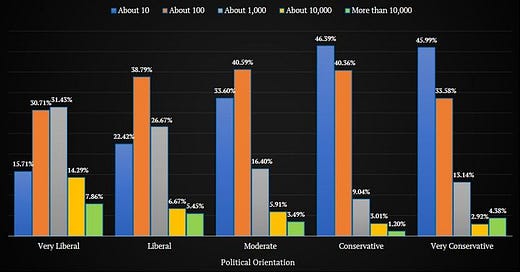The Bigotry of Good Intentions: An Examination of the 2020 Social Justice Movement
Several times in the past decade, but especially since 2020, we have increasingly heard phrases being thrown around like ‘Black Lives Matter’ and ‘Defund the Police.’ Many who question the narrative around these terms are snared in a Kafka Trap:
“A Kafka Trap is a fallacy where if someone denies being x it is taken as evidence that the person is x since someone who is x would deny being x. The name is derived from the novel The Trial by the Czech writer Franz Kafka. The reason this is fallacious is that it lumps together people who genuinely are not guilty of a perceived offense in with people who have committed the perceived offense and are trying to escape punishment.” - Debate Wiki
The Kafka Trap serves as a useful tool in silencing dissent and maintaining a firm grip in controlling the narrative. However, a lack of conversation around these topics leads too poorly researched activism, resulting in sloppy solutions being implemented that, despite sprouting from good intentions, have negative outcomes.
On a surface level this article is about perception vs reality. At a deeper level it is an examination of how good intentions can lead to negative outcomes. We will examine the relationship between African Americans and Police Officers to illustrate the bigotry of good intentions.
The mainstream narrative is that African Americans are being killed in large numbers by police officers. Let’s start by examining at what people perceived to be the number of unarmed African American deaths from police officer interactions:
The above 2019 graph shows that a sizable chunk of people, particularly those identifying as liberal or very liberal, think the number of unarmed African Americans killed by police officers is over 1,000 with some estimating the number to be over 10,000. Given the context of the graph, it makes sense that people are upset about African Americans killed during their interactions with police officers. However, the true number of African American deaths in 2019 is far lower with the total number of African Americans killed by police officers sitting at 282 according to Statista and the number of unarmed African Americans killed by police officers actually being 12 according to a Washington Post database which is a far cry from the perceived number of African American deaths in 2019.
So what happened? Mass protests were held in 2020 that resulted in police budgets being cut and chaos erupted in several major cities across the USA. The summer of 2020 saw over 500 riots, and a month long occupation of a neighborhood in Seattle Washington. At this point a strange cognitive dissonance emerged: activists who were rioting and destroying neighborhoods where African Americans lived claimed to be doing so for the betterment of the African American condition.
As a result of the police department budget cuts the number of homicides increased with some areas reporting a doubling in the number of homicides. 54.7% of homicide victims are African American, making them the primary victims of homicide. African Americans being the most impacted by homicide statistics means the 2020 protests negatively impacted the very community they were attempting to serve. How did things get to this point?
The above graph showcases how the usage of racial language increased several fold in the past decade across several major legacy news outlets. Rising usage of racial language exposed Americans to constant news cycles generating a perception that did not match reality. Inflating the coverage of what are rare, but still tragic, occurrences of African Americans being killed by police officers created an environment where any who questioned the narrative were ostracized and an artificial consensus was reached - prime conditions for disincentivizing research and mobilizing a mob.
A lack of honest conversation around the topic led to good intentioned people engaging in poorly researched activism which in turn led to negative outcomes for the same community these activists wished to aide. We close this article advising one be careful and do deep research before firmly entrenching themselves into a cause to avoid being an unwitting accomplice to the bigotry of good intentions along with some words of advice from the great Thomas Sowell: “There are no solutions. There are only trade-offs.”





